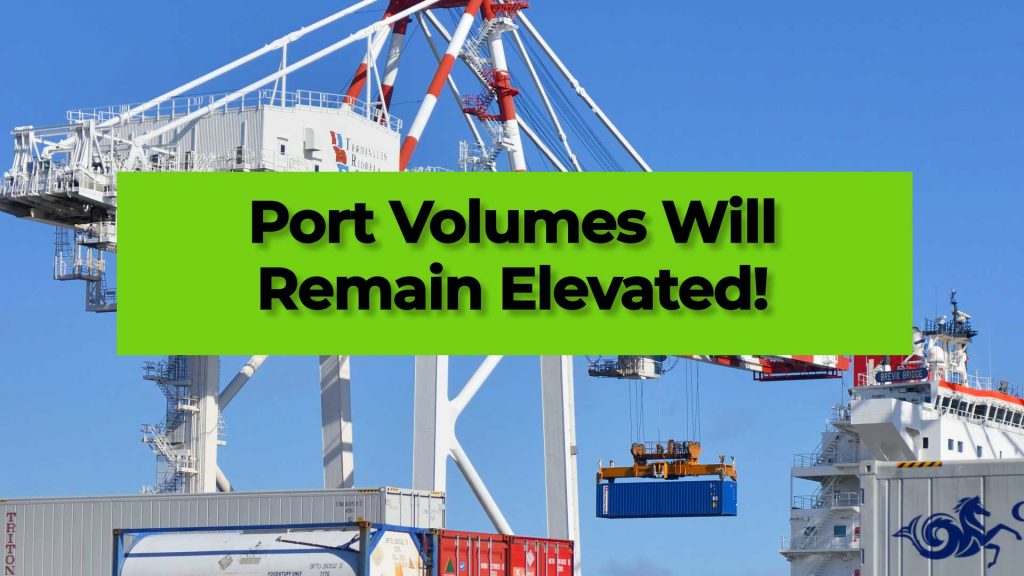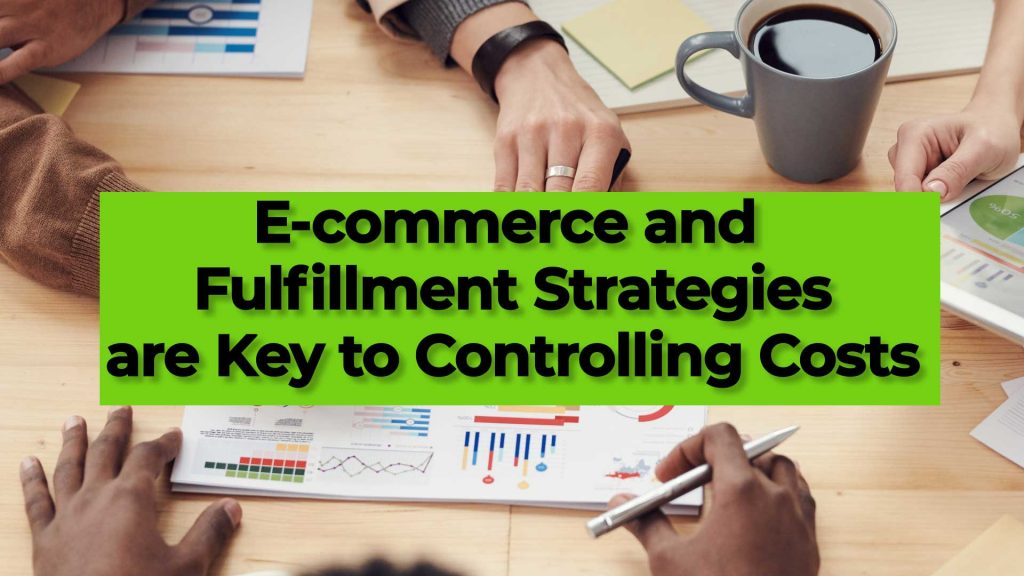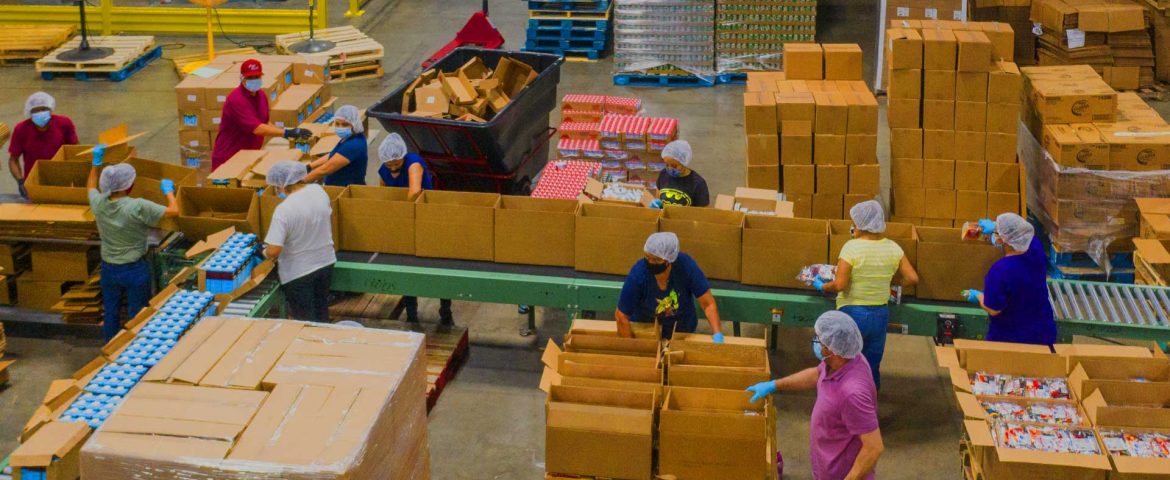Record freight volume, capacity constraints, port congestion, major parcel delays, record consumer e commerce sales, historically low inventory demand, working from home and to top it all off – a global pandemic are how supply chain and logistics professionals are have started 2021.

Port Volumes are High
An example being the recently reported 2020 numbers for the Port of Long Beach, port volumes are at record highs, meaning that imports are continuing to keep ports capacity maxed out, resulting in less extra transportation capacity in the major port cities. For international shippers, this means freight rates will remain elevated for trans-Atlantic and trans-Pacific passage as well as drayage and inland transportation costs. Delays are also to be expected when moving freight out of west coast ports. US railroads have also reported their west coast intermodal capacity is heavily in demand, with little to no spare capacity. Shippers moving large quantities of international containers via intermodal freight will also see rail delays largely due to drayage and equipment shortages.
For domestic shippers, expect the current high(er) freight rates to remain elevated for several months at a minimum with numerous lanes experiencing capacity constraints.
Restocking Will Continue
Many retailers are still seeking to increase inventory levels from 2020 levels which were lower than average. Factory shut downs and transportation delays lead to lower than normal inventory levels, but retailers are seeking to improve inventory levels, especially as many have experienced record-breaking e-commerce sales. If your inventory levels are still low, you will need to keep in constant communication with supplies and supply chain partners to provide enough inventory for sales and slower rebuild inventory levels.
Just in time inventory management has become a standard, with decreased capital costs, decreased inventory costs, and higher inventory turnover, it is an optimized model for financial performance. However, due to less “extra” inventory, it relies on suppliers and transportation partners getting replenishment stock in on a much more precise schedule which is a prime target for disruption with a major event like the covid 19 pandemic.
Consider keeping inventory levels higher in 2021 than you typically would in years past. While hopefully, the world is on a path back towards normalcy with the advent of coronavirus vaccines, disruptions will likely still happen. To keep your firm functioning reliably, higher than normal inventory levels can be a powerful risk management measure.
Trucking Driver Shortage will only get Worse
As anyone in the industry has often heard, there is an increasing shortage of truck drivers that will continue to be an issue going forward. Covid19 has slowed the recruitment and licensure of new truck drivers. Covid19 on top of the FMCSA’s 2020 drug and alcohol policy has helped to increase the shortage of drivers.
Carriers are attempting to recruit more company drivers and owner-operators. Class 8 truck sales reached a record number as well during the final months of 2020, showing that carriers are working hard to expand their capacity while freight demand remains high.
In short, this is another reason to suggest that freight rates are not going to drop as much as normal in the early months of 2021. Shippers will pay more to move their freight than normal during the first quarter of 2021.
Bidding Strategy
Shippers have many different approaches to moving their freight reliably, efficiently, and controlling costs. A large percentage of shippers bid out lanes on a yearly or even multi-year basis, while others prefer to let 3pls handle much of it, and even others keep a portion of freight moving via the spot market. The most sophisticated supply chains will use a mixed strategy. When it comes to rates, 2020 initially saw very low rates during the second quarter followed by a quick rebound that has only grown towards the end of the year.
This volatility means that long term bids can be challenging for both carriers and shippers. For example, a yearlong contract signed in April 2020, would be a strain for carriers to adhere to when rates have increased so much. In contrast, a single or multi-year contract signed in December of 2020 would result in shippers paying higher than market rates within the next 3-5 months when volumes eventually drop.
The solution is to hedge pricing by either splitting your shipping needs between contracts and the spot market or consider shorter-term mini bids, that are valid from 1 -3 months. Spreading volume across a wider than normal carrier and logistics partner base will also help to alleviate pricing across lanes. For many long lanes, intermodal is a very compelling alternative to over the road trucking, with rates substantially less costly and volumes available on lanes that trucks are hard to source.
Embrace Technology or Lose!
Simply put, you need to be integrating technology into your supply chain operations. The range of solutions currently available is wider than at any time before, giving you a huge range of technologies and services to create more efficient processes, more data-driven decisions, increase visibility and collaboration between your facilities and outside partners. As rates have risen, consider looking at digital freight providers like Zmodal as additional sources of capacity.
Supplier and Supply Chain Diversity
2020 was a wakeup call for mitigating risk within the supply chain, as we’ve said before, this will be a major focus of many firms as they go into 2021. We mentioned that firms are seeking to maintain higher than normal inventory levels will be a trend while the pandemic continues to mitigate running out, but other strategies will be equally important and more long term in nature. Especially, firms will try to reduce relying on a single supplier for a majority of components or products. By spreading their supplier base across multiple countries, the political and geographic risk is also reduced. For many smaller firms, diversification in this manner will be harder to achieve, but even many small firms should and will add suppliers to their base and be able to maintain operations in some form if a supplier is faced with a shutdown.

More Focus on Final Mile and Reverse Logistics
E-commerce demand and growth have pushed final mile and fulfillment demand to grow at a record pace as well. Double-digit e-commerce growth is expected again in 2021. On a per-mile basis, the final delivery portion of a package’s journey is by far the highest cost. Many industry-leading firms have focused on expanding their fulfillment and final mile delivery capacity, and expanding geographic reach.
While the increase in e-commerce is a great sign of long-term economic recovery and growth in light of the covid pandemic, it also can increase costs for retailers as shipping costs and added product handling can quickly decrease profit margins on items.
Long term, it remains uncertain how brick and mortar stores will fare, no doubt some firms will shrink their physical store footprint, and increasingly rely on e-commerce. For these companies in particular, managing fulfillment and reverse logistics costs will be a strategic focus over the coming years.
2021 will no doubt throw a few curveballs, but the most important takeaways for retailers, manufacturers, and shippers should be:
- Freight Volumes and thus costs will remain high. Delays on the international side will remain a problem.
- Resilience and diversity should be a focus. Ask yourself “If your biggest supplier shutdown next week, what would you do?”
- Technology integration will lower your costs and make your operation more efficient.
- If your business heavily relies on E-commerce, do you have a strategy in place to control costs as fulfillment volume and returns rise?
Look for more Zmodal Supply Chain Tips and Articles coming along very soon. If there are any topics you would like to see covered in our written articles or video series, let us know!
About Zmodal
Zmodal is a digitally enabled third-party multimodal logistics provider delivering intermodal, trucking and supply chain services via our own digital intermodal platform powered by our proprietary technology, all focused on giving you the service to make your company grow!
Recommended for further reading:



